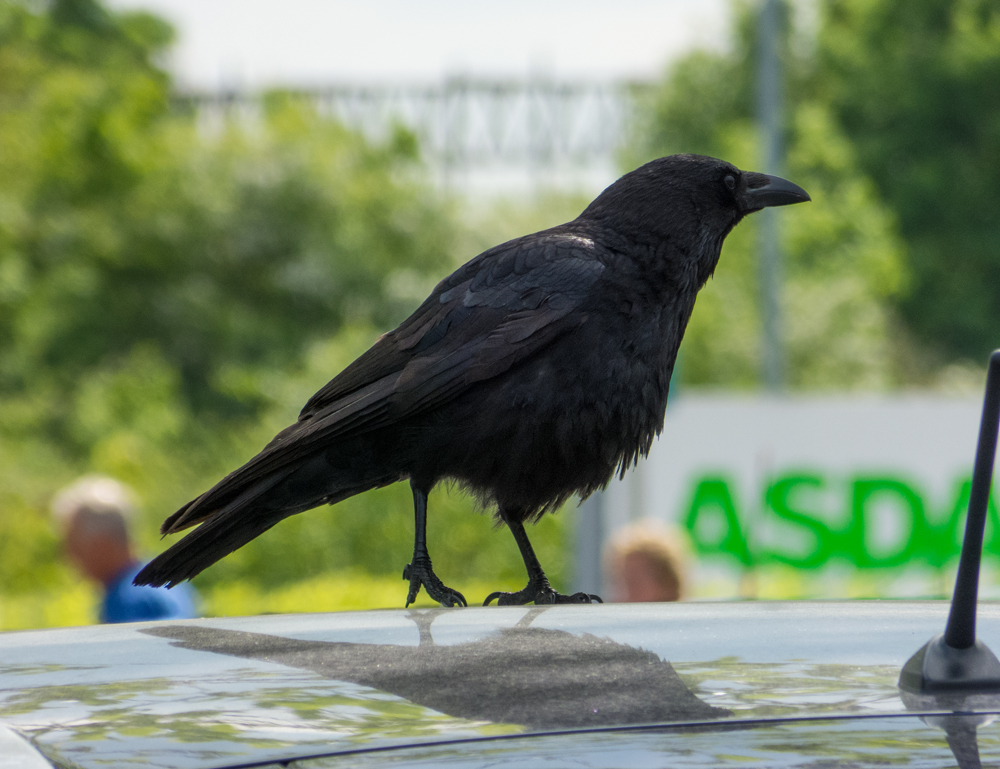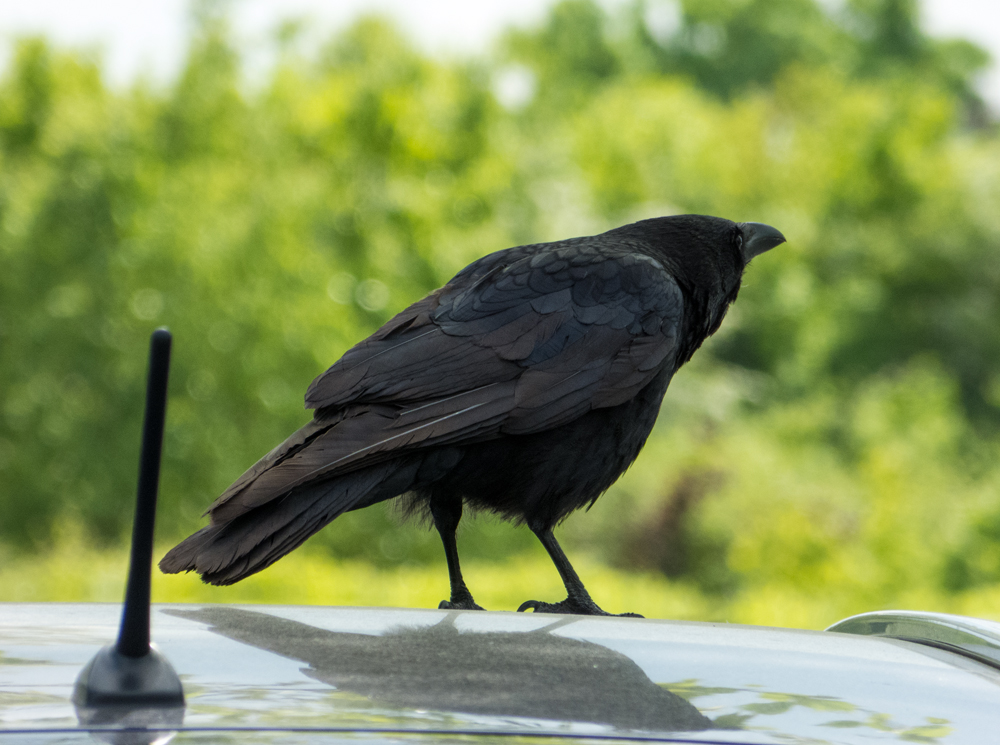High cirrus ‘mares’ tails’ on Saturday promised rain on Sunday – which duly arrived – then on Monday things were rather more showery but the sunset suggested that Tuesday would be dry. In Colchester the morning brought grey and white stratocumulus which dominated the sky all the way to London. Things were breaking up and brightening up during the run from Stratford to Galleon’s Reach DLR, so the UEL Docklands Campus was bathed in sunshine with scattered cloud. By the journey home from Stratford the sky was looking calm and settled, with large expanses of blue sky and small bands of cumulus fractus or cumulus humilis near the Lone Oak east of Shenfield:

By Galleywood the bands had thickened slightly over the fields of ripening wheat, but there was no sign of the clouds building up into cumulus congestus or cumulonimbus calvus – with their drenching showers:

Between Kelvedon and Marks Tey there were hints of stratocumulus development but without any real conviction, and in fact the dusk saw even these bands fade away to leave a clear sky:

This calm sky is good news because tomorrow is School Sports Day for my Little Helper (we are apparently slightly nervous about this…) after having been postponed because of the torrential rain two weeks ago.
Author: Richard Lindsay
What the Commuter Saw : 30th June 2016
A sky of confusion and contrasts today, though with remarkably little rain, which makes a change. The sky above the Colne Valley weir was dominated by cumulus, but there was a hint of a thin, veil of cirrostratus high above that:

This continued through to the fields west of Witham:

…but by the time Abellio Greater Anglia had left Chelmsford and was running us unusually slowly past Galleywood and Billericay, the cumulus congestus clouds were evidently building up and potentially heading for full-blown development of cumulonimbus and the inevitable rain:


By the time we had reached the Lone Oak east of Chelmsford, the sky seemed to be turning somewhat mad, with cumulus piled upon cumulus, although by the Lone Oak itself there was a hint of blue sky:


Arriving a while later at Galleons Reach DLR Station, the cumulus had developed into long cloud streets running directly between me and Canary Wharf:

The view from the UEL Docklands Campus down Royal Albert Dock towards Canary Wharf was dominated by spectacular cumulus cloud streets, but above these ribbons of low cloud there was still a suggestion of a high cirrostratus layer:


Although the great-crested grebes have now gone from the dock, a shellduck flew past and settled in the middle of the dock:

Walking back to the DLR that evening, I was struck by the fact that the wild carrot (Daucus carrota) is all coming into flower now, with some still forming unopened umbells of pink and white while adjacent plants are in full bloom, with their characteristic spot right in the centre of the umbell:

Once on the train from Stratford to Colchester, the clouds around the Lone Pine after Shenfield were simple cumulus, but they were increasing in complexity all the time:

By the time we’d reached the fields west of Witham the sky was looking increasingly threatening as the cumulus began piling together to create a high, dark cumulonimbus cloud (which usually means rain):


By Witham the ska was completely cloud-covered and it looked as though rain would at any moment start pouring from the dark grey masses of swirling cloud:


Then, unexpectedly, a patch of blue sky broke through:

…which was quickly extinguished by the surrounding roiling clouds…and by the time we had reached the Colne Valley weir again things were looking pretty gloomy once more:

However, when I continued on from the station to collect daughter from the gym, the adjacent meadow was becoming increasingly bathed in sunshine as the thick layers of cloud headed off eastwards, seemingly at a leisurely pace but actually they must have been moving at quite a speed:

Consequently and unexpectedly, the day ended with blue skies and a sun-dappled, flower-rich meadow:


What the Commuter Saw : 21st and 27th June 2016
This is the Chinese Year of the Monkey, which apparently brings turmoil and change to everyone. Given the political events, and the nature of the weather, since the start of the year I am forced to consider that there may be something in this… The last week alone has seen the shock Brexit vote, flash floods (during which James Knowles commuted past a flood-stranded London bus on a lilo), David Cameron’s resignation and even talk of a snap General Election. The sky has mirrored this chaos by flipping wildly from fair-weather cumulus to threatening banks of cirrostratus to huge cumulonimbus calvus and back again, all seemingly within half an hour of each other. It has, however, made for some fabulous sunsets (see, for example, earlier posts) and some interesting cloudscapes while journeying between Colchester and Stratford London courtesy of Abellio Greater Anglia.
On the 21st June there was not much to photograph on the journey into London because it was largely clear blue skies with few clouds, although a distant band of fair-weather cumulus added some interest to the fields just west of Witham:

The cumulus had built up somewhat by the return journey, and was catching the pink of the sun as it slid down towards the north-western horizon, giving some fine views towards Billericay and Galleywood:


By the time we were leaving Chelmsford the sky was taking on a wilder look, dominated by high banks of cirrus and cirrostratus forming a great cauldron over New Hall School, the Hanson Aggregates tower, and the fields just west of Witham:



By Marks Tey, however, the cauldron had turned into a rippling lake of milk made up of cirrocumulus stratiformis and floccus:

There then followed several more days of rain and sun, and momentous political upheavals, but the morning of 27th June brought banks of cumulus humilis in what looked like a day of calms and summer sunshine:

Incredibly, given the strength of the rain that we have had recently, the wheat in the fields between the ‘White House’ and the railway line shows no sign of having been flattened by the rain, and is growing vigorously:

Larger banks of cumulus over the fields west of Witham threatened to begin building up into rain-bearing cumulonimbus calvus:

…but over the Hanson Aggregates tower and New Hall School to the east of Chelmsford these faded back into a cross between cumulus humilis and altocumulus stratiformis – an interesting combination which could subsequently develop in a variety of ways:


Walking from Galleon’s Reach DLR Station to the UEL Docklands Campus, it was good to see the full range of wildflower meadow species at last in flower. The mallows in particular are now out, adding their pinks to the purples of the common knapweed, the yellow of the bird’s-foot trefoil and the white of the ox-eye daisies. The musk mallow (Malva moschata) is pale, and attracts moths at night:

…while the common mallow (Malva sylvestris) is a darker pink/purple with dramatic guidelines directing nectar-feeders to the nectaries:

Later, waiting on Platform 10 at Stratford Station, I realised that we had a mini-rainbow (actually a ‘circumzenithal arc’) directly above us in the high cirriform ice crystals. In his wonderful ‘The Cloudspotter’s Guide’, Gavin Pretor-Pinney calls this ‘the cloud smile’ and (as Richard Hamblyn in ‘The Cloud Book’ notes) it means that the sun must have already sunk to within 32 degrees of the horizon:

These high ice crystals coalesced rapidly during the journey, and by Chelmsford were creating a wild cirrostratus fibratus sky which steadily thickened towards Colchester. Rain is on the way – and indeed although today began bright enough, by mid-afternoon we have had yet more heavy showers:



Still at least the rain is now warm… so summer must finally have arrived – which explains why wife and daughter each bought a pair of wellingtons at the weekend…
Myland cloudscapes, Colchester : 24th June 2016
Yet another striking sunset, if not as striking as the one displayed the other night, and yet again I was racing to catch the light before it faded. One again, I grabbed a quick shot from the nearest meadow of the large pink and white cumulus drifting overhead. These were the most striking aspect of the sunset but alas I missed most of this:

Trotting round the margin of the more distant fields, the pink faded from the mounds of cumulus:

Then it reappeared as a large bank of rather higher cumulus drifted over:



After that, the light began fading pretty rapidly over the field of barley:

Until things dimmed to a pale sky with dramatic pink streaks out to the north-west:

Time to head home, the walk involving an encounter with two rather fine-looking foxes but there was too little light to photograph them. They spent a little time haring up and down a water-filled ditch trying to find a way across (everything is very soggy underfoot or actually flooded). The blackbird was still singing in the churchyard as I walked by, and some scuffling in the undergrowth close to home suggested either voles or shrews – at the moment, given the conditions, they’d better be water voles or water shrews…
Myland cloudscapes, Colchester : 22nd June 2016
One way or another it’s been a busy few days, and although I’ve collected quite a large number of photos, I’ve not had the opportunity to process them and assemble them into a blog. This evening, however, produced a stunning sky at sunset so I went haring out into the fields and managed to produce a small number of views (and some unexpected wildlife!) on the eve of the EU vote…
Although I was literally sprinting past the church and on down the lane, carrying camera, tripod and folding stool, I could see that the light and the clouds were changing faster than I could capture them. I thus grabbed a quick view from the nearest meadow:

Hurrying on to the main fields, I was brought up sharp by a distinctive shape perched on a tree at the corner of the first field. I couldn’t be sure in the half-light because all I could see was a silhouette, but I was pretty sure I knew what it was although I’d only ever seen one twice before. I tried moving slowly closer but it promptly flew off, confirming what I had suspected – a little owl (Athene noctua) – the scientific name being given because in ancient Greece the owl was associated with the wisdom of Athene and it was thus her symbol:

Hurrying on the the main fields, I could sense that the light was fading rapidly and that even with the tripod it was going to be increasingly difficult to capture what I was seeing. I grabbed a quick panorama (which look better when clicked on – use browser back arrow to return):

Then trotting along the field margin to obtain a clearer view of the setting sun I encountered a field of barley, which always brings to mind the song by Sting – ‘Fields of Gold‘:

The sky steadily turned deeper shades of pink and gold:


The finally the light began to fade completely, leaving only a band of gold lining the north-western horizon while above it the altocumulus clouds were steadily thickening:

Now, as I write this blog at a little past midnight I can hear the rain, promised by the mare’s tails earlier this afternoon, starting to patter against the window in the darkness…
Myland wildlife, Colchester : 18th June 2016
A confused cirrus sky formed of swirling hexagonal cells had me grabbing the camera and wellies. As I was about to dash out of the front door, Little Helper asked: “Can I come too?” Several more minutes spent finding relevant wellies, jackets and other essential items meant that it was some 10 minutes before we set off to the fields. Astonishingly, although it looked as if the clouds were just hanging there, going nowhere any time soon, in the further 5 minutes it took us to get to the fields, three-quarters of the sky was clear and the remaining cloud cover was rapidly vanishing to the east. It’s only when you try to capture clouds that you realise just how fast they are moving and changing. The only record we have of the cirrus clouds is thus Little Helper’s photo from her iPad taken in the garden before we’d even got going, and even then, the patterns had already changed:

Consequently the trip to the fields turned into a journey to find interesting alternative scenes with photo potential despite the rapidly-fading light. The honeysuckle (Lonicera periclymenum) is now in flower, which offered something of a challenge:


The red campion (Silene dioica) was positively glowing in the dusk light, nestled amidst the wickedly-spined foliage of spear thistle (Cirsium vulgare):


Out in the fields, the wheat is now at least knee height:


Meanwhile around the margins of the field, in the headlands, a mixture of rye grass and oats gave a fringe of mixed colour that was growing almost twice the height of the wheat (but then the wheat is devoting large quantities of resources to producing fat seed heads). The vivid red colour of the oats contrasted strikingly with the muted green of the rye grass:




Walking back home through the churchyard, a couple of stone planters with geraniums caught my eye:


Arriving home, the full moon was already bathing the landscape with its rather yellowish glow, and the local blackbird was singing its heart out from the neighbouring roof-top, declaring its territory into the gathering darkness:
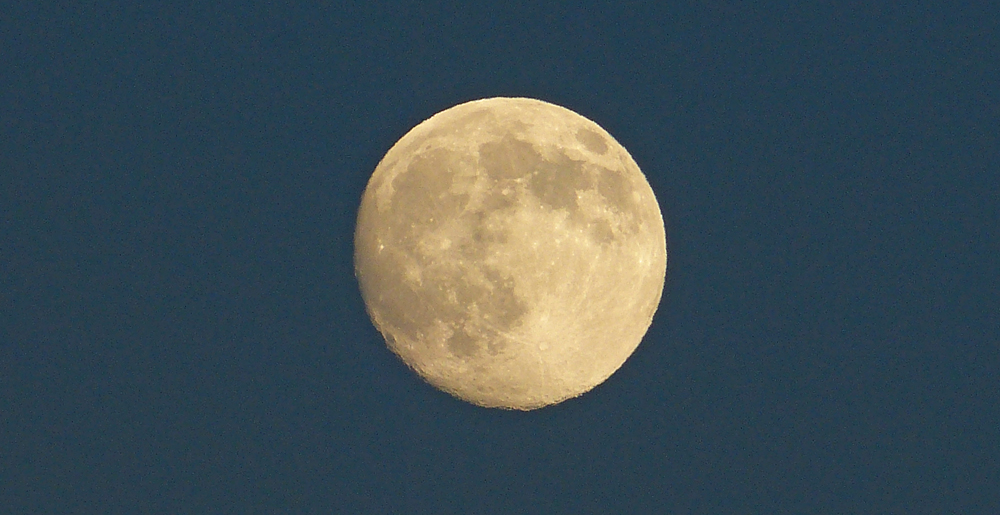
Myland cloudscapes : 15th June 2016
Taking annual leave today so no commuting down to London, and not really any opportunity to grab pictures of the really spectacular cumulonimbus calvus bubbling up all day because there were so many other things to catch up on. I did manage to grab one image of a huge cloud rising up over the centre of Colchester:

Then at the end of the day, while operating the gym school taxi service again, I caught a rolling band of cumulus mediocris over the adjacent meadow (and these cloudscapes really are worth clicking on to see the full image – use browser back-arrow to return):

…while to the south, spread across half the sky, was a vast banner of left-over anvil from a cumulonimbus cloud (cirrus spissatus cumulonimbogenitus – that took a lot of careful typing…!):

While gym daughter was throwing a team-mate into the foam pit as a birthday celebration, I grabbed the last of sun as it sank into the clouds to the north-west:


More heavy showers predicted for today, so perhaps more spectacular cloudscapes…
What the Commuter Saw : 14th June 2016
A rather chaotic start to the day because of a fatality on the line near Witham. All very sad. The result, however, was that Colchester Station was full of people wondering when the trains would start running again. The station staff were all very good, but they couldn’t tell us when the police forensic crime-scene team would finish. Consequently I took the opportunity to take some rather more leisurely photographs of things around the station that would be missed in the normal course of events. The local wildlife provided entertainment as well.
Most striking initially were the huge and confused cumulus congestus clouds which were boiling round the horizon and threatening to dump large amounts of rain on us at some point:


A particularly large one was looming closer as the wind carried it towards us along the line from the west:

Then I spotted one of the resident station collared doves (Streptopelia decaocto) apparently trying to reconstruct a nest from a great deal of material which was now scattered on the platform, apparently after some form of nest disaster. Each twig was waggled and twisted before being selected or rejected:



After the collared dove had flown off to find more satisfactory construction material, I spotted some striking stands of herb robert (Geranium robertianum) growing amongst the stone ballast beneath the rails themselves. The red colouration seems to be a response to extreme drought conditions, but quite what the mechanism is I’m not sure:


The the ballast itself offered photo opportunities – along with much processing in Photoshop:


A turquoise grating also caught my eye:

Then continuing the blue theme, the spring clips holding the rails to the sleepers looked quite interesting as potential images:



After that, some rail sections piled up waiting for use offered further potential, thanks to Photoshop:


Then a pair of magpies came strutting along by the fence, prodding and poking everything that offered even the faintest hope of fun, until they, too, flew off:



Finally the trains started coming through again, and although there were some fairly spectacular skies I managed to nudge the focus button so everything until Chelmsford was totally out of focus. Sigh… Still, the few photos between Chelmsford and the Lone Oak east of Shenfield give a sense of the angry and confused sky:



The journey home that evening was remarkably smooth, considering that all the trains were probably in the wrong place by mid-afternoon. The sky had cleared, and didn’t really offer much until the poplar field to the west of Chelmsford:

After Chelmsford the sky became rather dramatic rather quickly, with a thin veil of cirrostratus steadily covering the sky (and creating sun dogs) while beneath this layer the bands of altocumulus were merging steadily into an increasingly thick and continuous layer:


On gym-school taxi service, I managed to grab a final view of the sun as it set over the adjacent field, and a shot of bird’s-foot trefoil – also known as ‘eggs-and-bacon’ – (Lotus corniculatus) in the still of the evening when there is no wind to blow it about:


More thunder clouds predicted for the next couple of days. Summer, eh…..??
Exmoor : June 2016
Off to Exmoor to help train this year’s volunteer peatland surveyors, organised by the wonderful quadumvirate (is that even a word?) of Andy Glendinning, Morag Angus, Maddy Davey and David Smith. The journey from Colchester to Taunton enjoyed glorious weather all the way, with the odd interesting dark cloud once we were west of Pewsey:
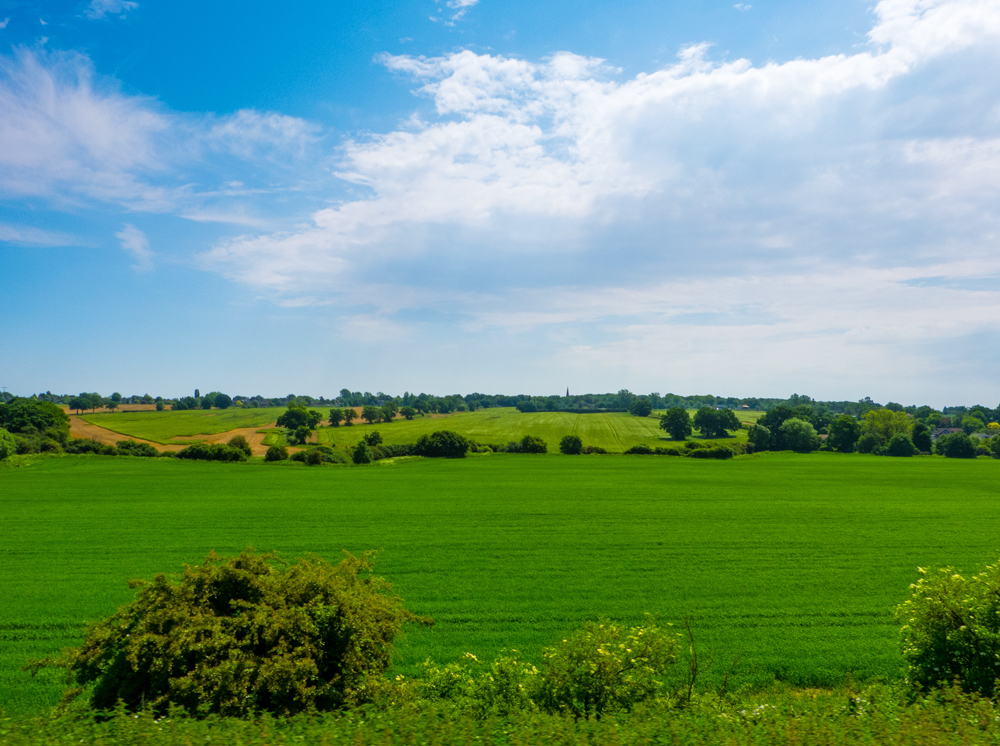
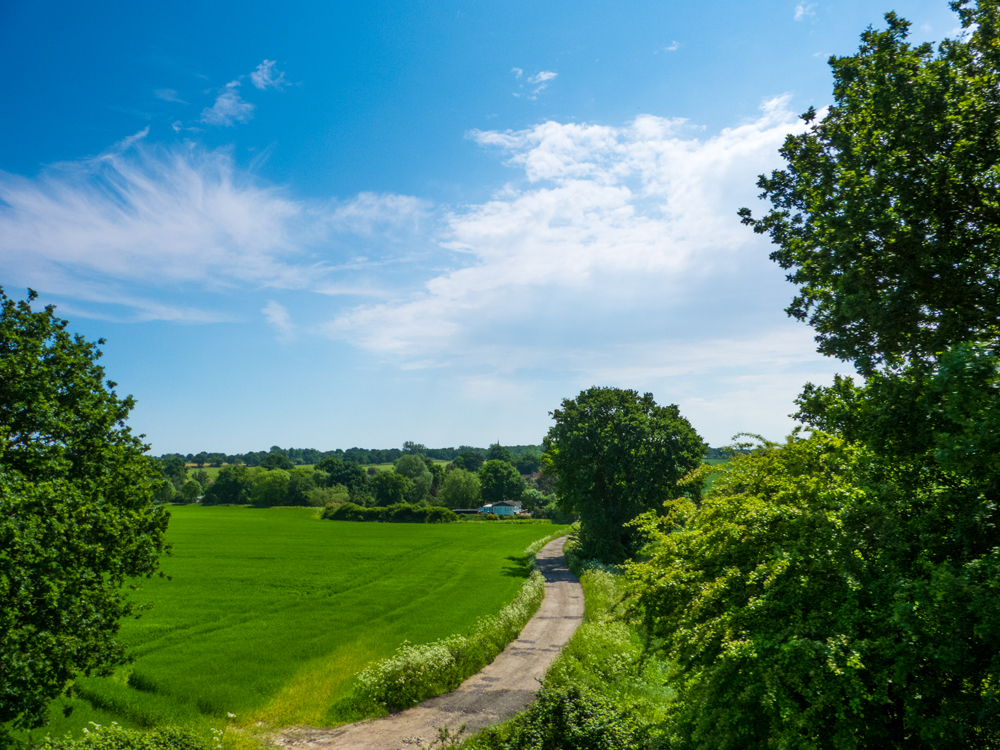


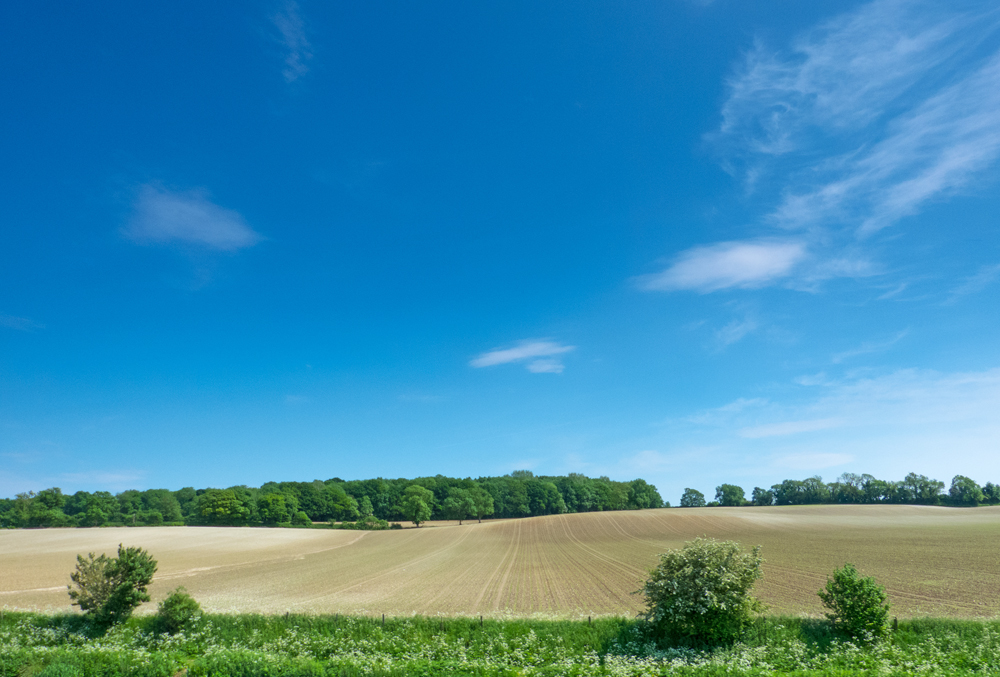
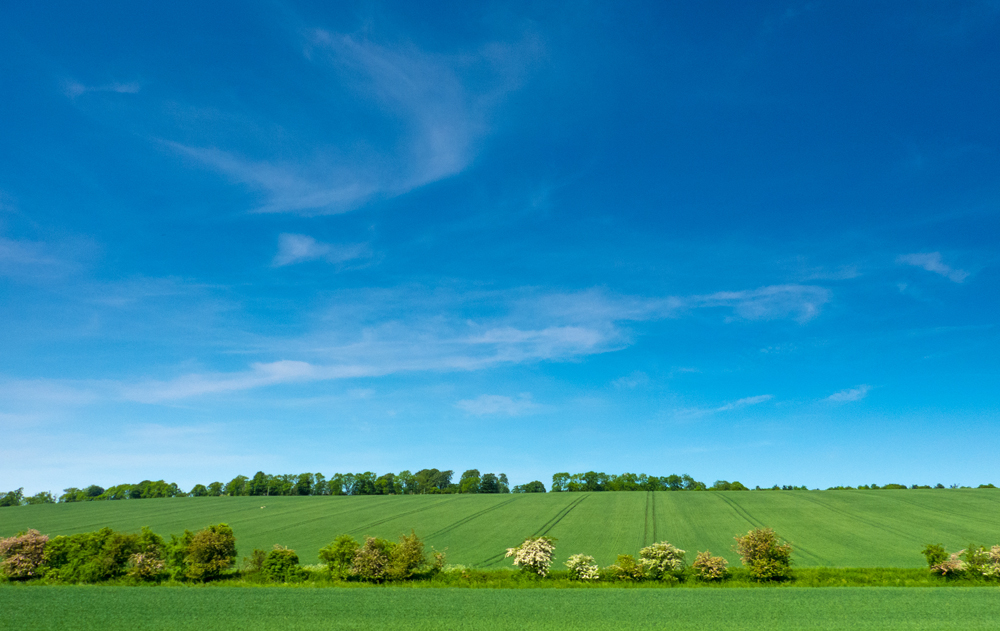
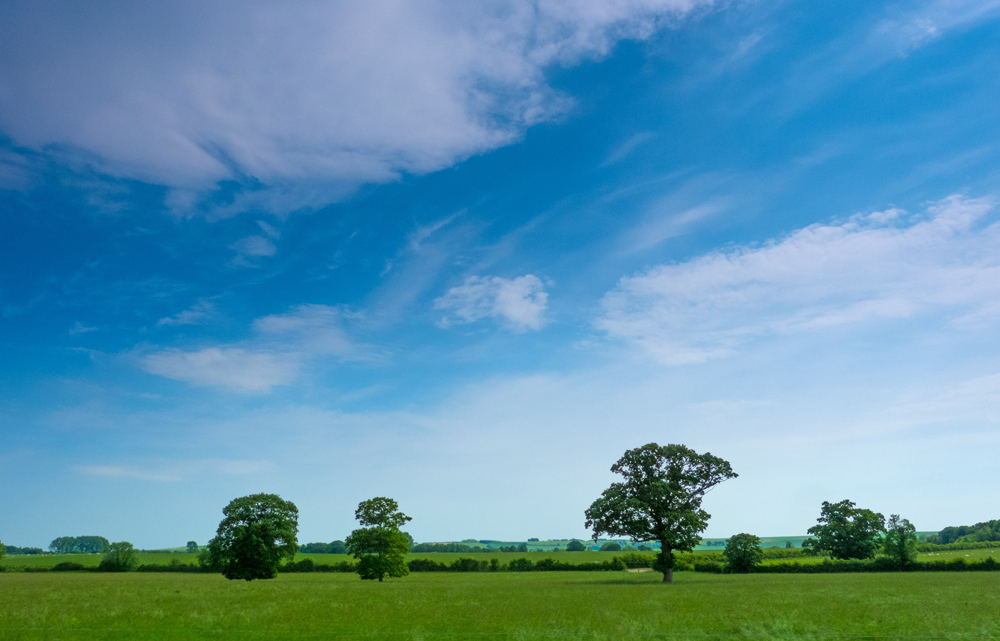
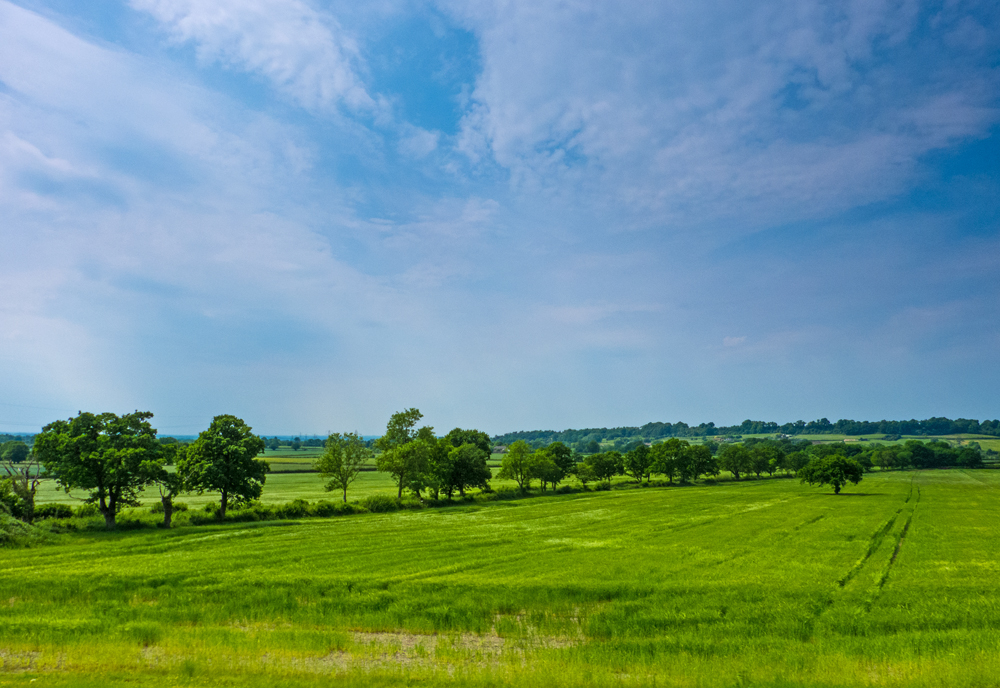
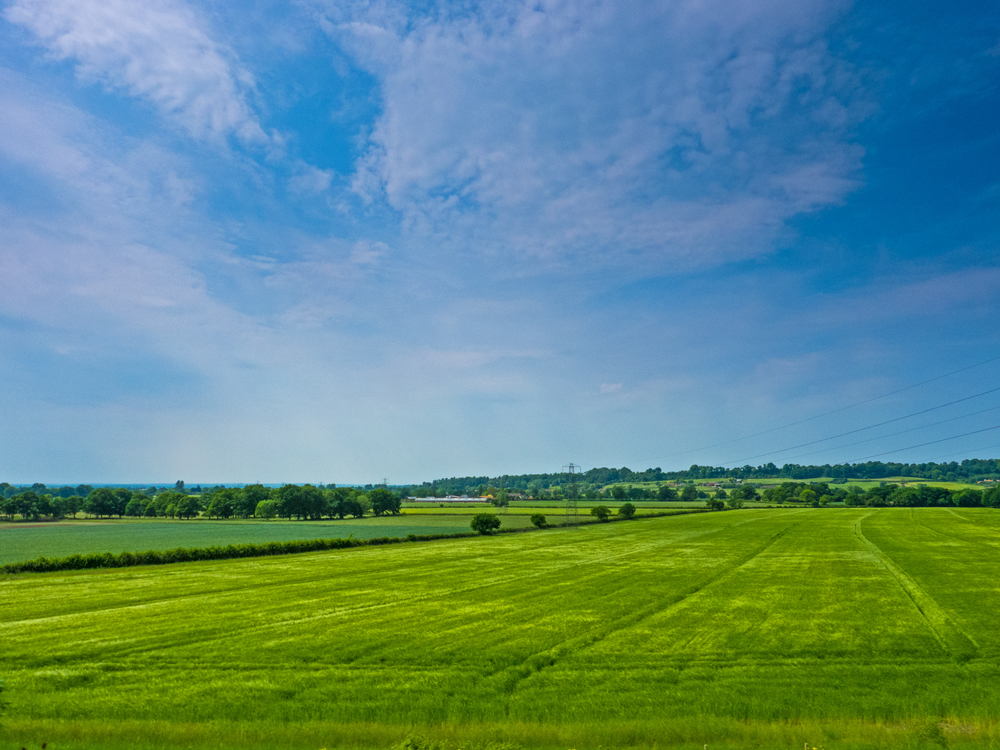
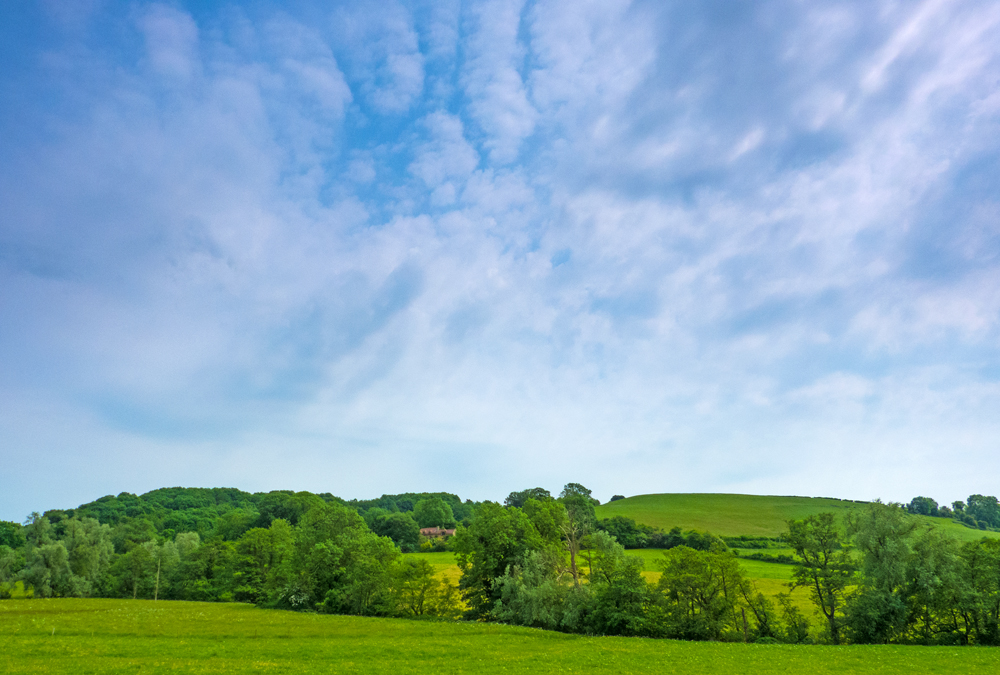
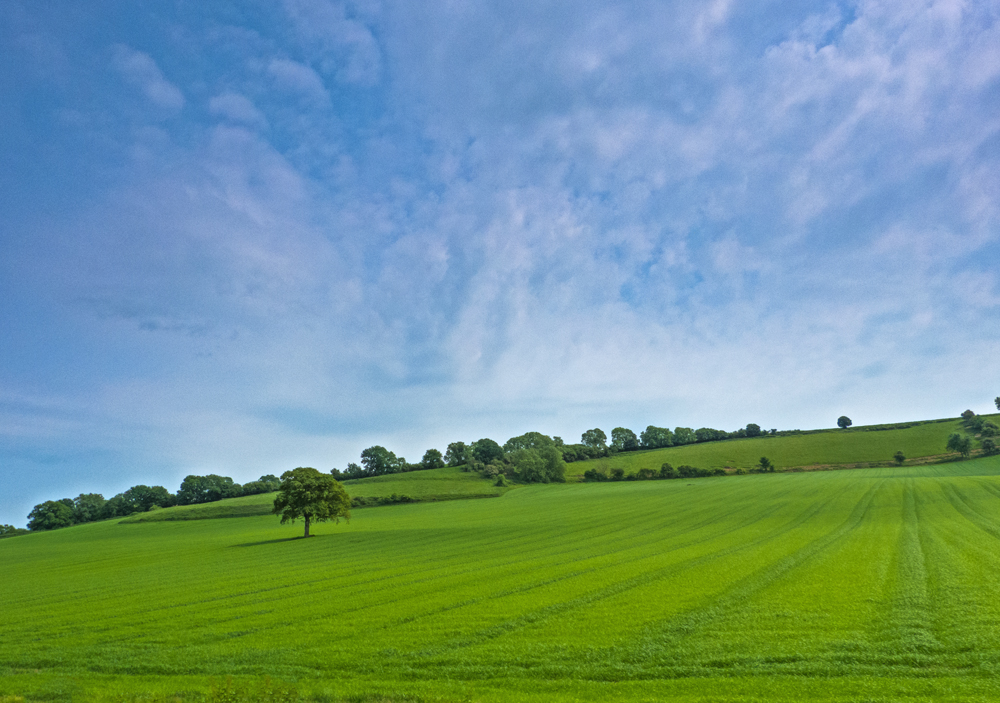


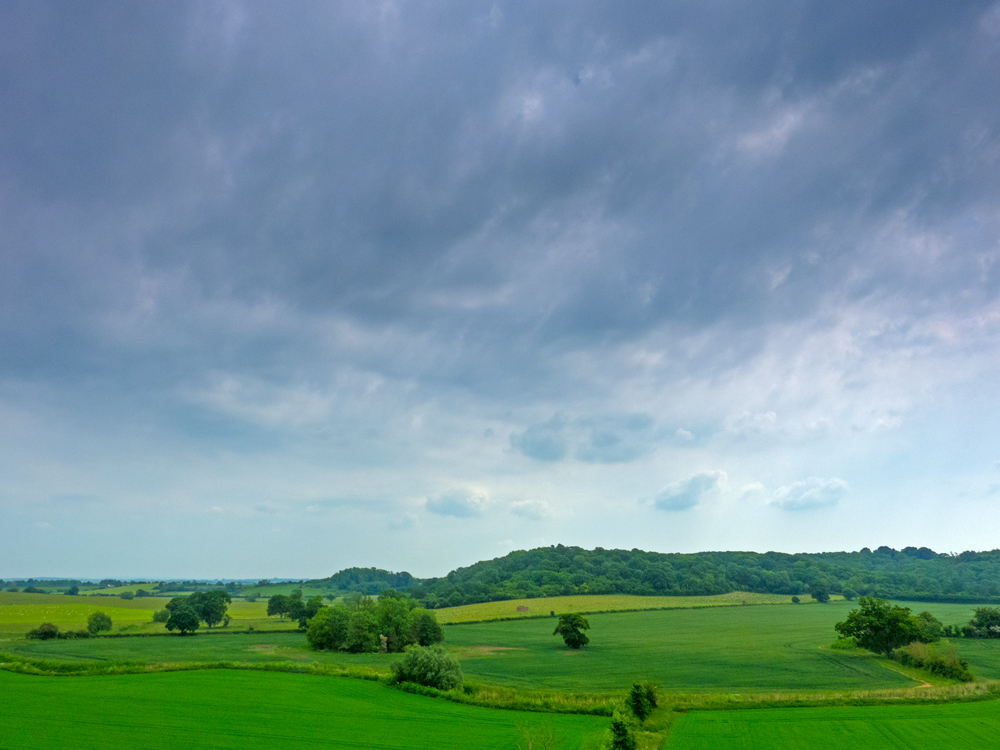


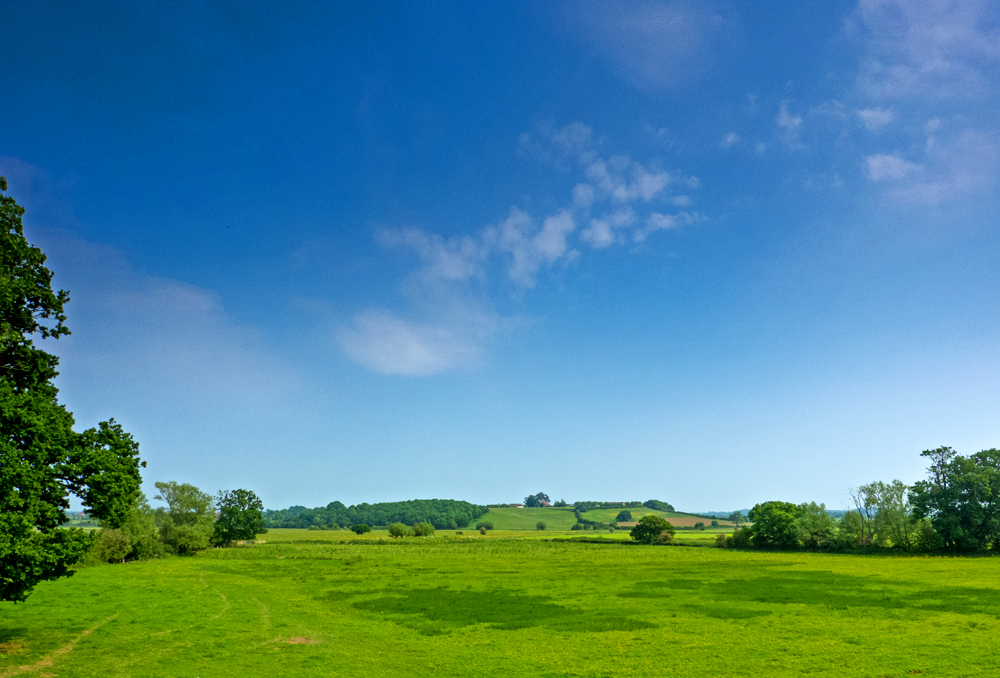
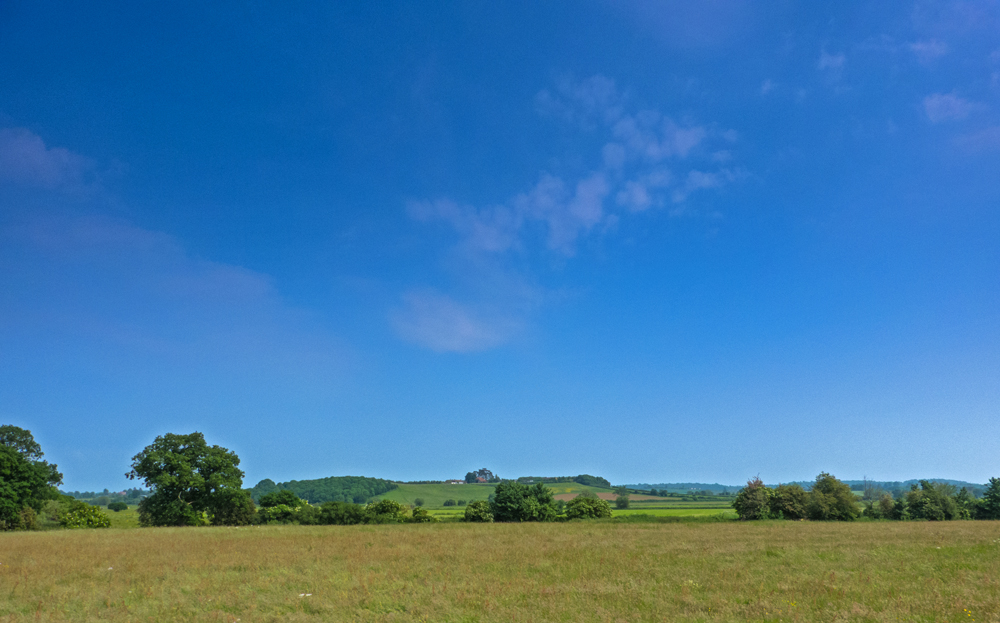
Once up on the Exmoor plateau, the views were wonderful:
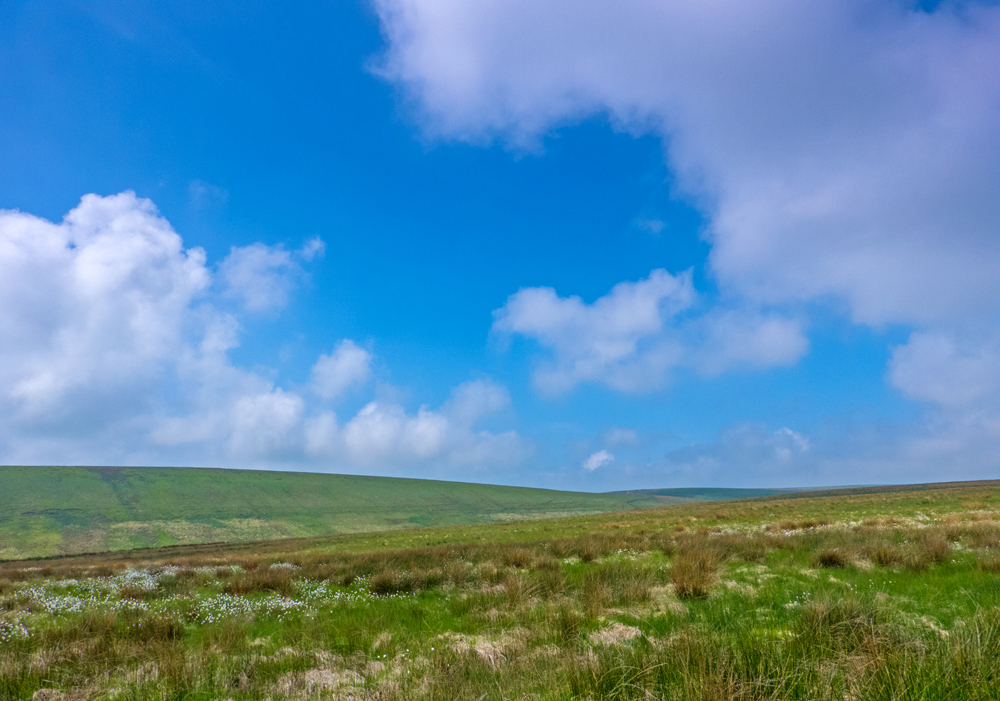
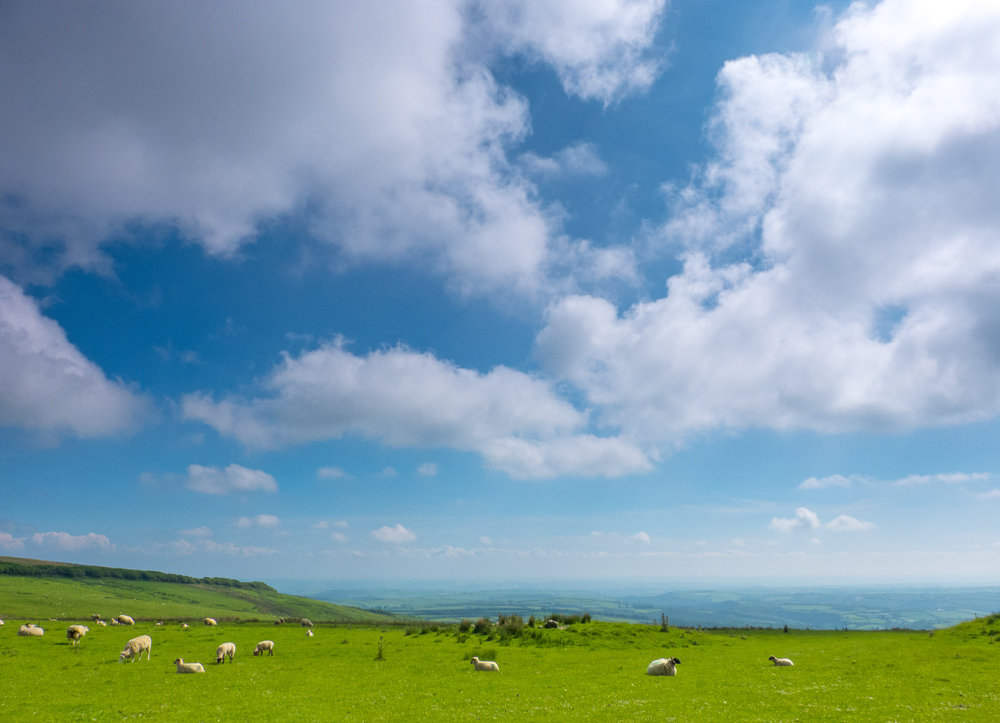
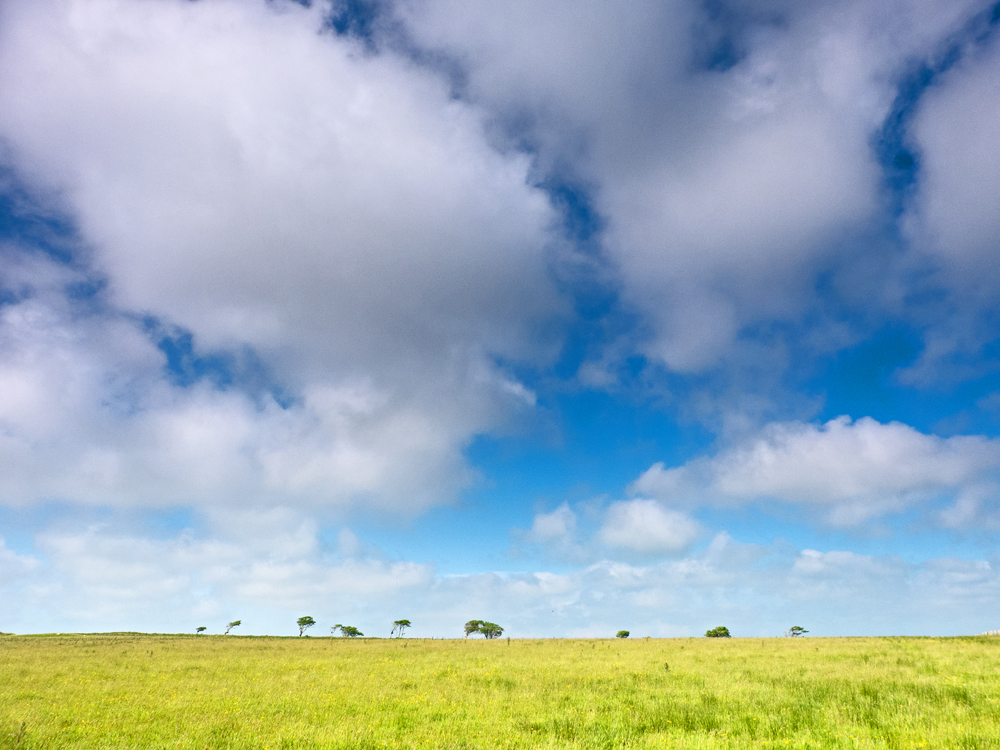
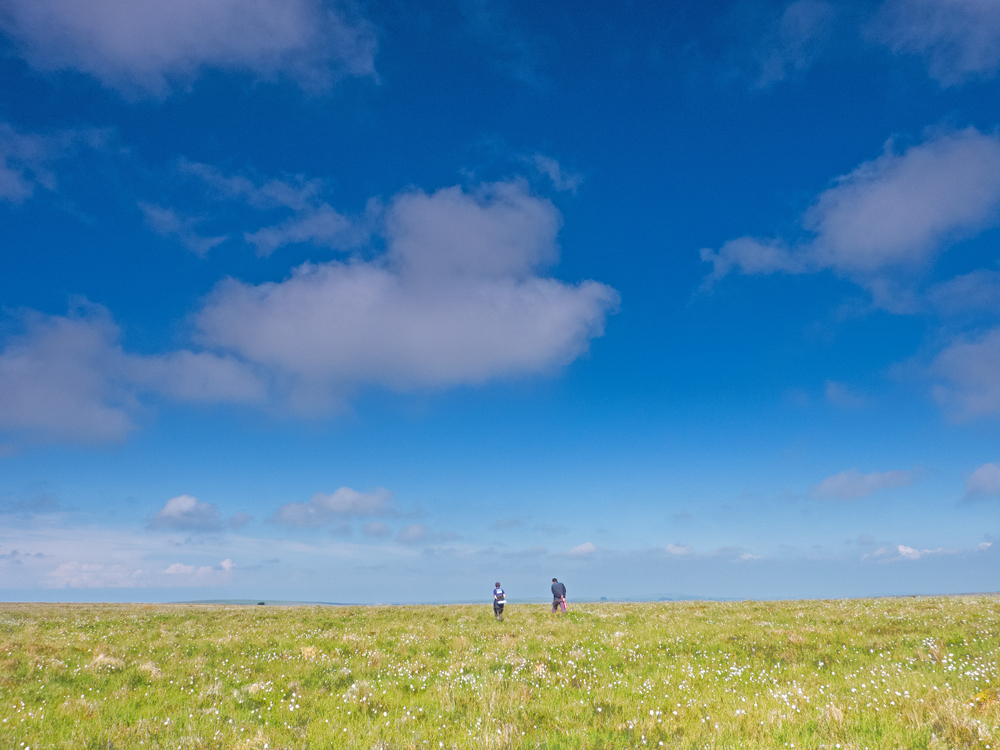
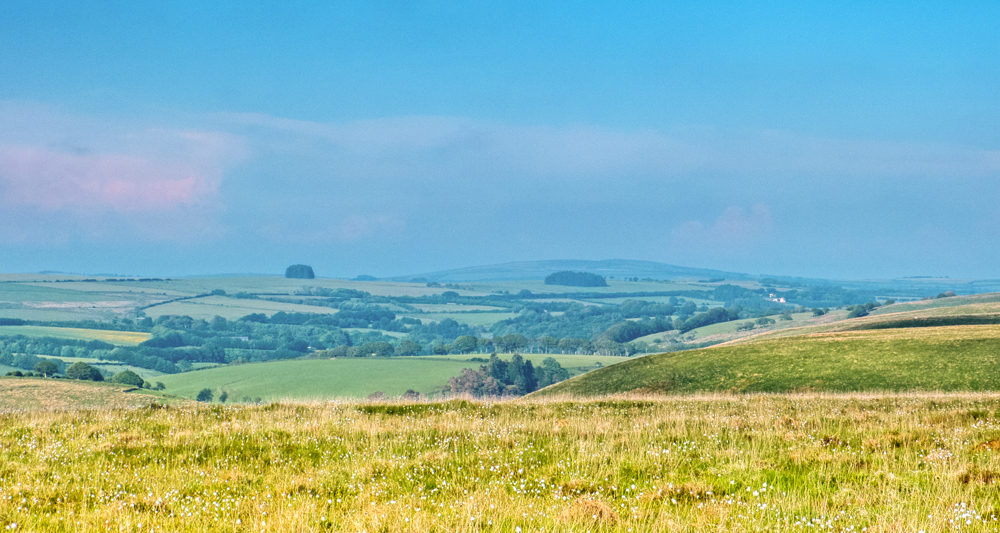

In addition to the ever-present skylarks, giving such a characteristic backdrop soundtrack to the bog landscape, there were curious stonechats, and the swallows were taking possession of all available telephone wires:
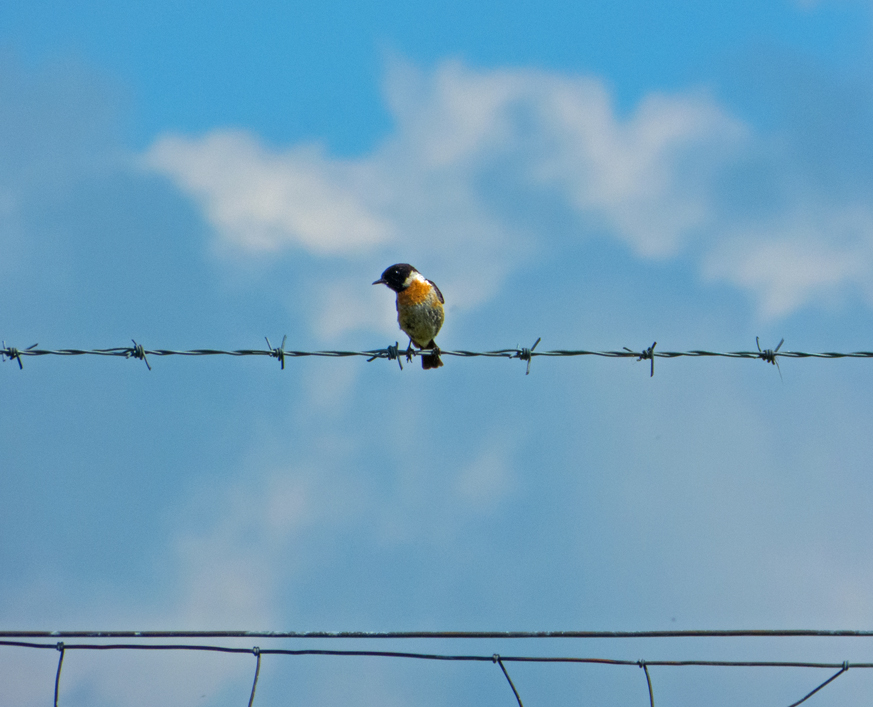
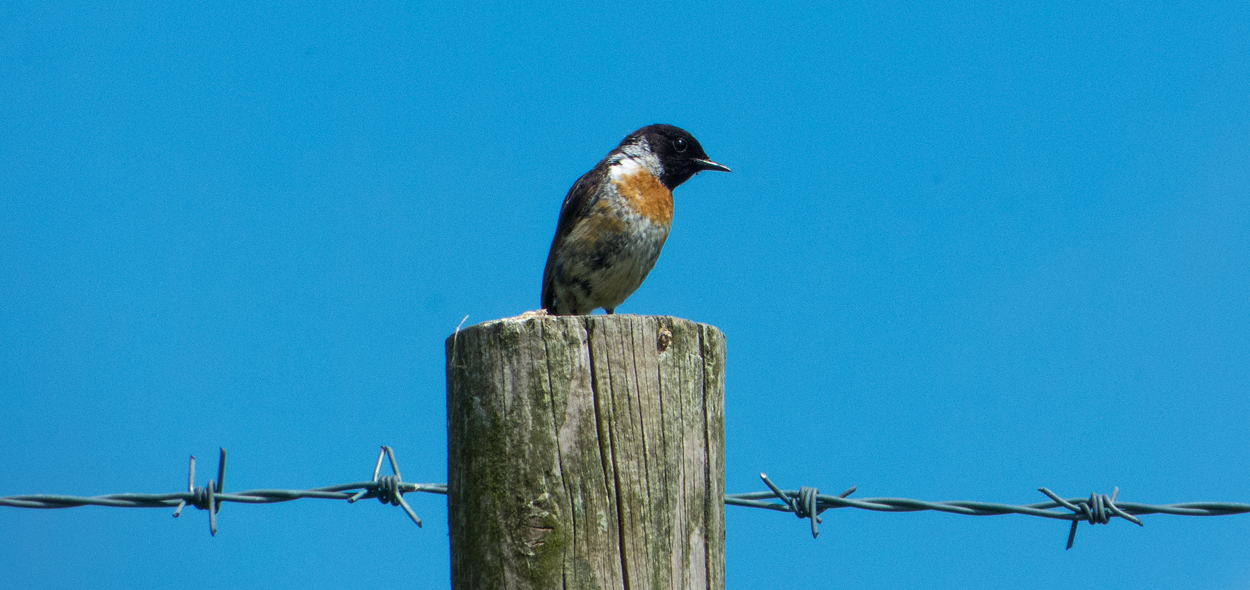
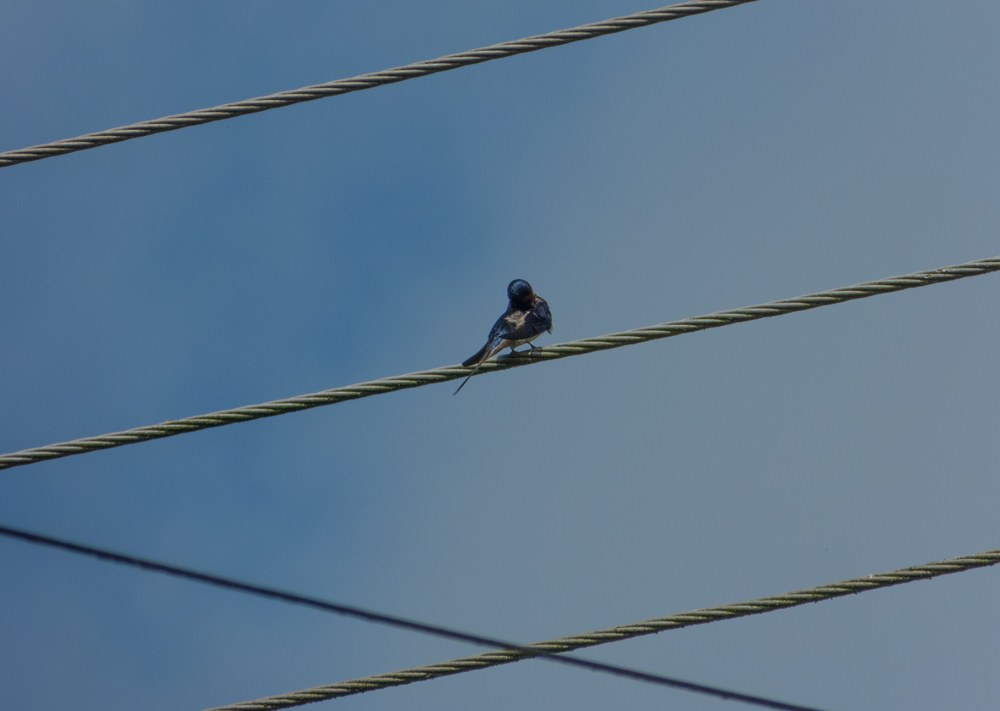
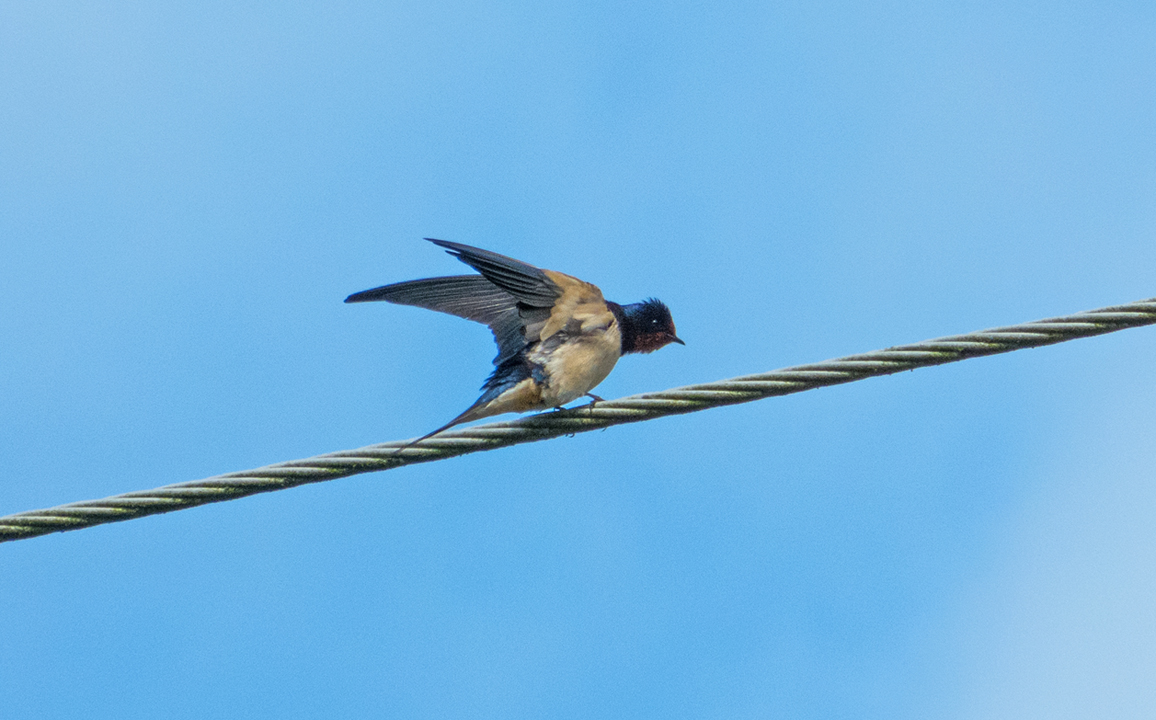
Then the cloud rolled in for a while but never seriously threatened rain – it was more a mysterious hill fog that provided all the Sphagnum with a welcome drink of fog droplets, while the garden chafer (Phyllopertha horticola) pretended that it was a Namib Desert fogstand beetle (Stenocara gracilipes), attempting – rather badly it has to be said – to trap the fog and thus obtain a welcome drink of condensed water:
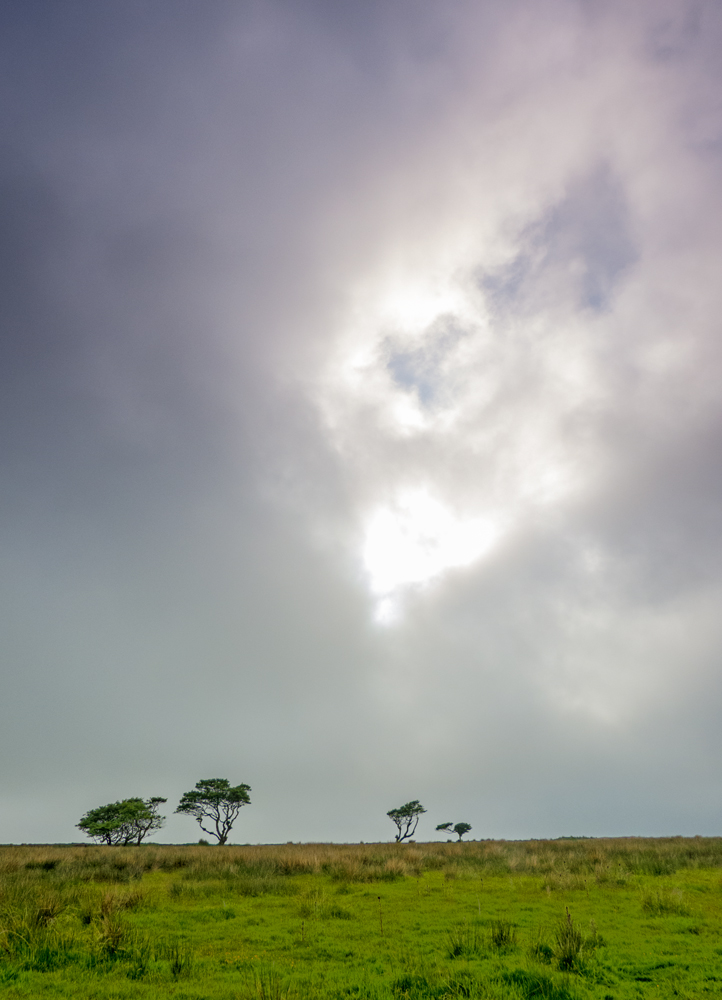

The journey home provided a wonderful series of views, but these are for another blog.
Thanks to all in the Exmoor Mires Partnership…!!!!
Myland wildlife, Colchester : 26th May 2016
Catching up somewhat on my backlog of wildlife/landscape photos, I had a brief detour through the green lanes of Colchester and Myland the other day on a quick trip down to The Range – a source of great art materials and much besides – not really expecting anything but just carrying the camera in case. In the event, a number of really interesting things were encountered.
The green lanes are really just gaps between things like industrial estates, railway lines and housing estates, but they are quite magical in their own way:
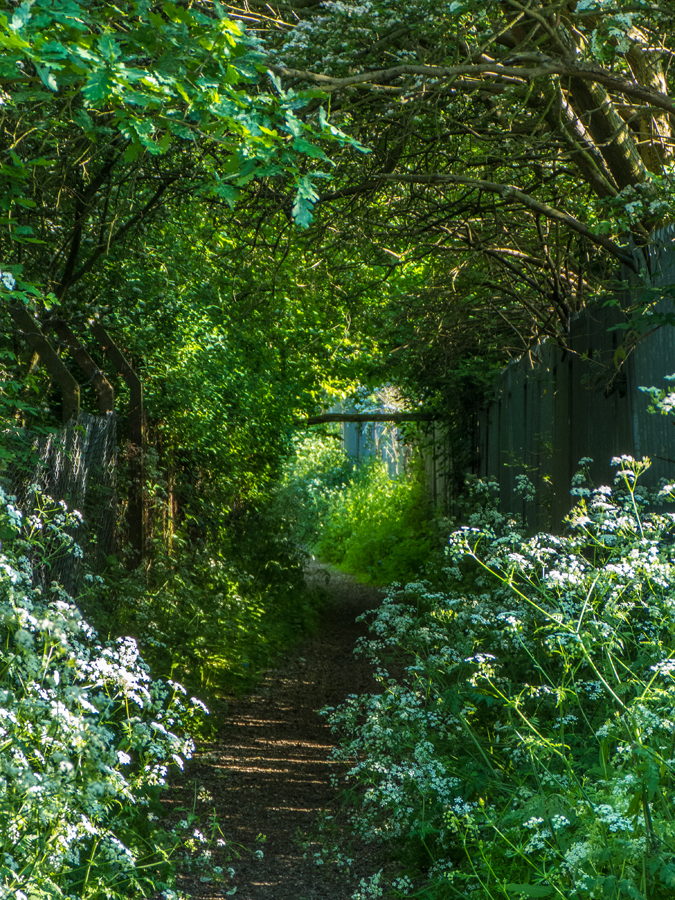
Walking along this particular one I was struck by this obviously decaying yet still alive tree, with two enormous clumps of yellow bracket fungus. The tree was still happily bursting into leaf (and I couldn’t work out the species – it looked rather exotic – and in fact fungus and insect grubs may eat out the middle of a tree to make it hollow, counter-intuitively enough thus making it stronger because it is lighter but still a strong cylinder so able to resist gales more. The Great Storm of 1987 destroyed huge numbers of relatively young trees, but many older trees survived because their trunks and larger branches were hollow and thus had less inertia when swung violently by the gusts – all thanks to fungi and xaproxylic invertebrates (dead-wood insects):
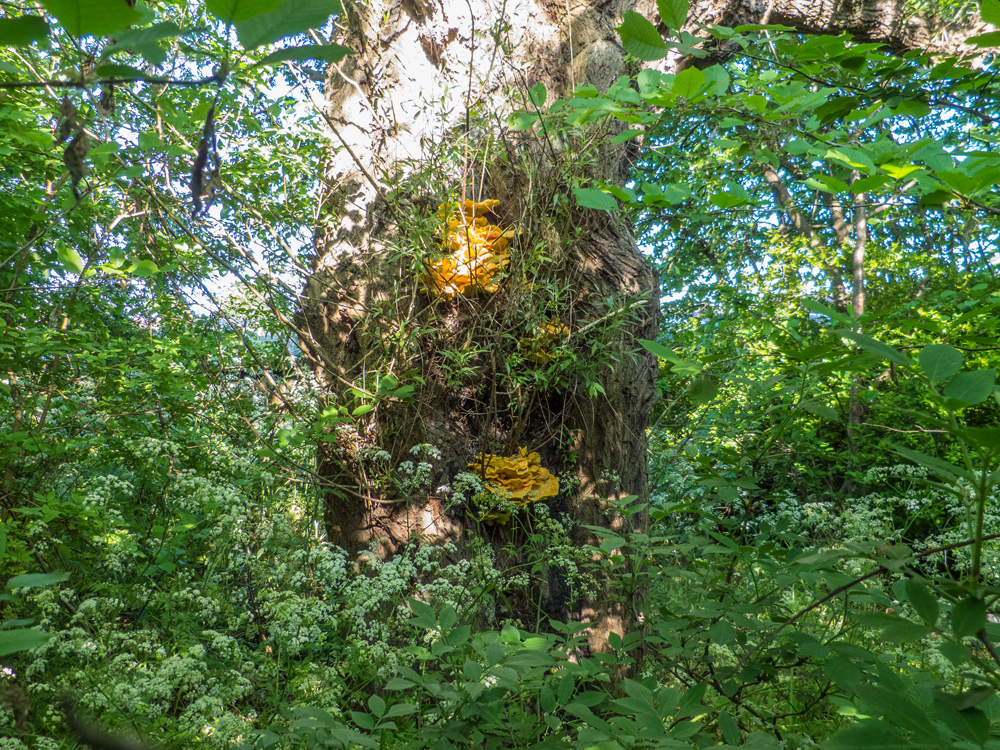
The fungus was, I think, yellow bracket fungus (Laetiporus sulphureus), or ‘Chicken of the Woods‘: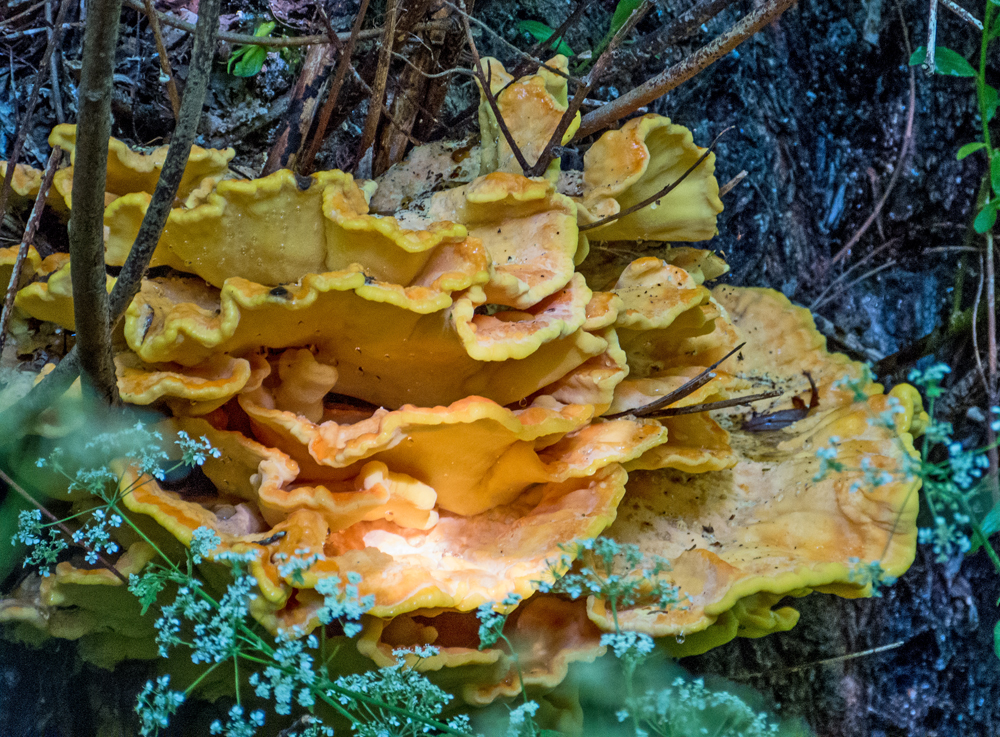
What was fascinating was that it was positively dripping, although there had been no rain for a couple of days. This moisture was the sap of the tree being exuded by the fungus:
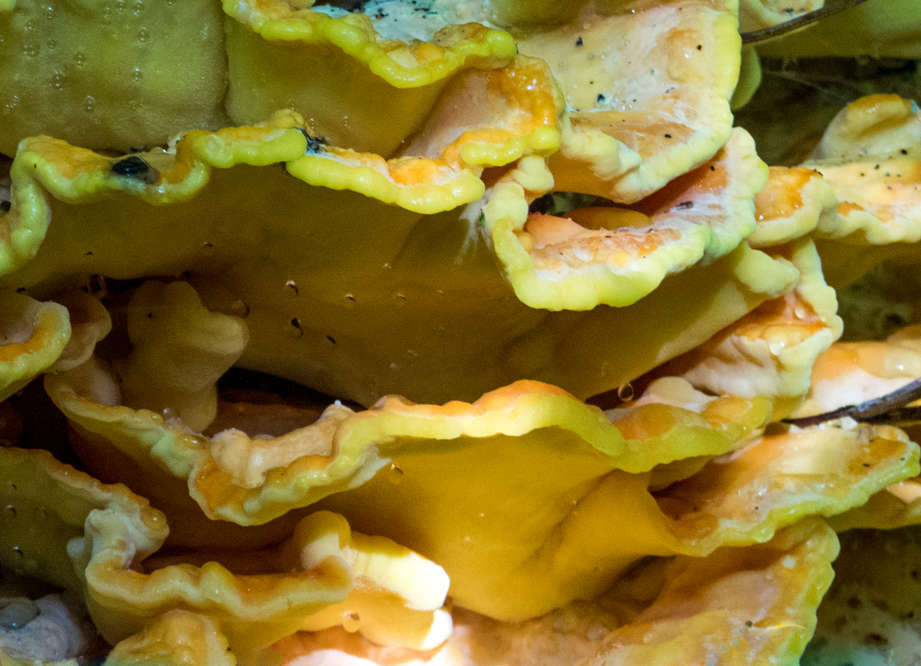
Along the edge of the railway line there were a few bramble leaves left from last season, but they had turned fantastic colours and were glowing in the sunshine:
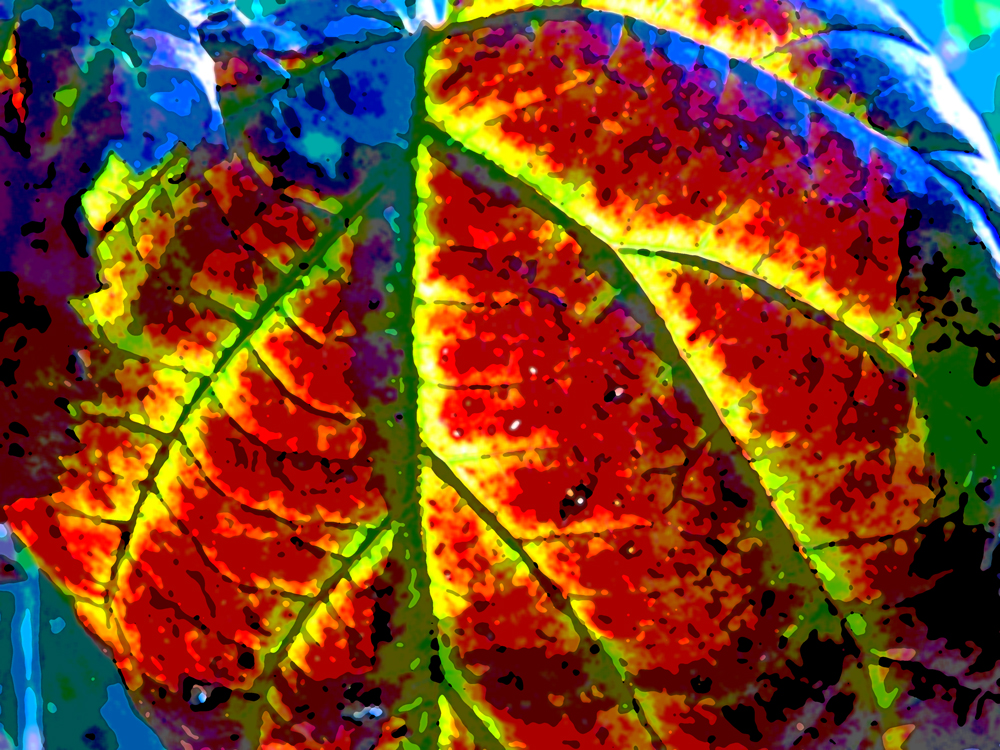
The green alkanet (Pentaglottis sempervirens) was also rich in gorgeous powder-blue flowers:
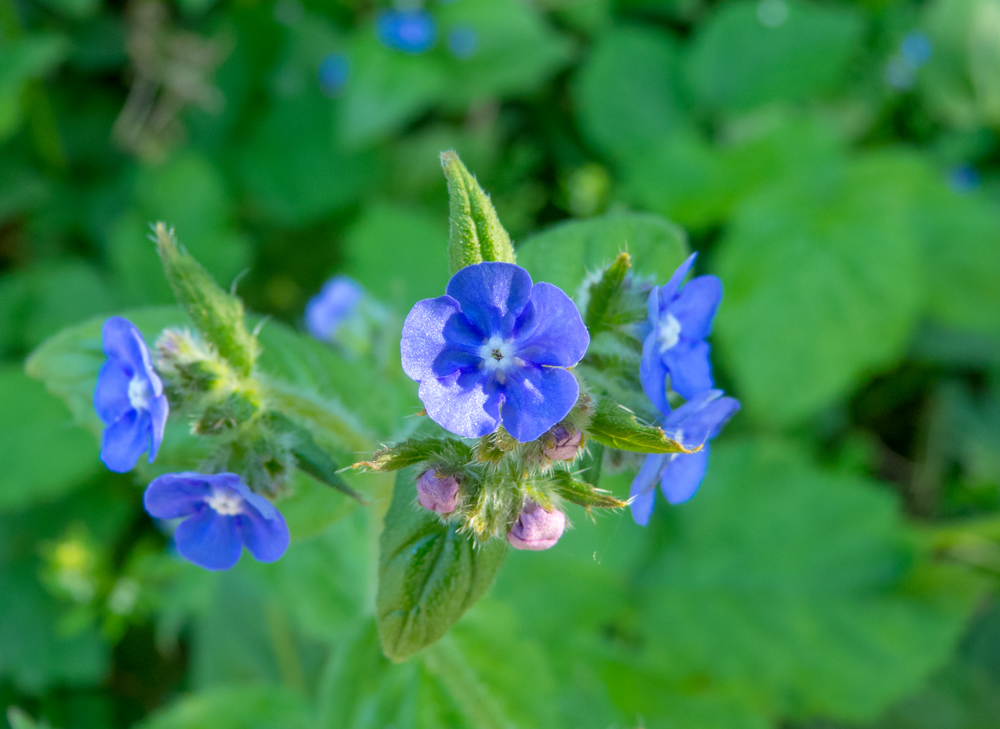
Walking up towards Asda, the coppery leaves of the roadside bushes (are they some form of elm?) were also catching the sunlight:
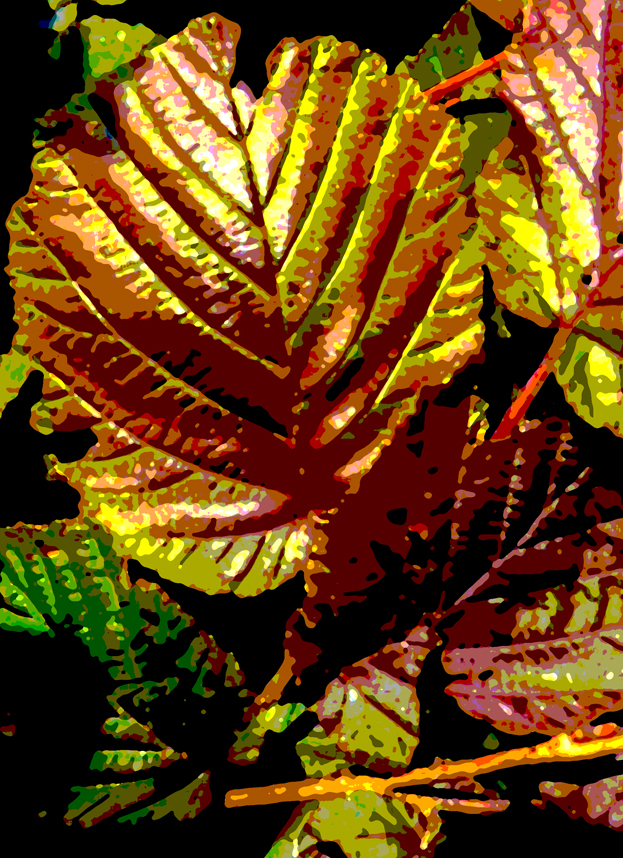
Then at Asda I watched an entertaining scene where a crow has taken up residence in a tree within the car park and clearly regards any car which parks under that tree as an inalienable part of its territory, loudly declaring the fact and chasing off any birdlife with the temerity to even think of approaching the said car. I’ve watched this crow for several days now, and it doesn’t matter what sort of car – it just needs to be under that particular tree. Very amusing:
